Maintaining & analyzing datasets has become so pivotal for companies that they're willing to pay extra for it.
As the role of data storage evolves with tech advancements, the persistent demand for data warehousing solutions keeps on surging. Over 54% of organizations use data warehouses; it's the highest adoption rate of data solutions.
To stay ahead of the market competition & adapt to market changes, data warehousing can make a huge difference to any business. However, it needs a deeper understanding to let you make the most out of it. If you're new to this term, then you might need a guide to learn:
-
What is data warehousing? How does it work?
-
What are the benefits of data warehousing?
-
What are the types of data warehousing models?
-
Which industries can take the best advantage of data warehousing?
Getting these questions answered are a priority if you want to move from traditional data storage systems to cutting-edge data warehouse & business intelligence solutions.
Table of Contents:
What Is a Data Warehouse? How Does It Work?
The term ‘data warehouses’ was coined by Bill Inmon in 1970. Later in 1991, the very first product based on data warehouse technology, named Prism, was launched for commercial use. Further, Teradata introduced its first data warehouse product in 1997. The first open-source data warehouse, MySQL, was released in 2000.
A data warehouse is a massive repository of data derived from resources dedicated to business decision-making & predictive analytics.
The concept of business data warehouses is the storage, management, & interpretation of data. It empowers organizations to make informed business decisions.
Enterprises aspiring to boost their data integration practices must leverage data warehouses to analyze & manage data for actionable business insights.
No wonder, indulging in data warehouse concepts is a fruitful strategy to combine & transform huge datasets into a single set of data insights & reports.
How does a data warehouse work?
A data warehouse stores a company’s data in one place. It helps you access and analyze a large amount of historical data to make smart business decisions. It uses tables and columns to structure huge datasets for easy querying and analysis.
A typical data warehouse contains two major components: A ‘fact table’ for the ‘main data’ and a ‘dimension table’ for ‘reference data’.
For example, a data warehouse used in a mobile app for big data sales and marketing setup would feature a fact table for sales data such as billing details and customer info. On the other hand, its dimension table would showcase other data, such as customer demographics and product details.
What Is Data Warehousing? Definition & Types
A data warehousing system is, as the term suggests, a database or repository of data. It uses ETL (extract, transform, & load) tools so that companies can use retrieved data for future analysis.
The idea behind data warehouse implementations goes well with predictive analysis for risk management techniques in a business.
Data warehousing involves simplified visualization of complex data in the form of tables, graphs, charts, and other visual interfaces.
There are five types of data warehousing models to integrate with your business. Let's discuss them at a glance.
Types Of Data Warehousing Models
Enterprise Data Warehouse (EDW)
This type of enterprise data warehouse is optimized for fast querying and analytical purposes. It retrieves data from distinct resources such as transactional setups, operational systems, and other databases.
An EDW is based on a multi-dimensional data model and is customized for an organization's needs. Deploying enterprise data warehousing benefits offers decision support and a unified approach to data visualization.
Operational Data Warehouse (ODS)
As the name states, this type of data warehousing model works for the operational needs of an organization. It typically collects and analyzes data in real time.
When the existing data warehouse systems lack reporting results, the role of ODS comes in. Operational data warehousing helps in the daily activities of a business, such as employee records, Customer Relationship Management, etc.
Data Mart
A smaller version of a data warehouse is a data mart. It's developed for a specific unit, segment, and department operating within a business.
Every section of the organization uses a data mart as a centralized database to store, access, & analyze data. The stored data in a data mart is further migrated to ODS, which later moves it to an EDW, i.e. Enterprise Data Warehouse.
Cloud Data Warehouses
When a data warehouse is hosted on a SaaS in cloud computing such as Amazon Web Services (AWS), it brings a bundle of advantages for an organization.
Data warehousing in the cloud results in higher scalability and reduced IT expenses on internal resources. Companies can optimize their databases using cloud-based data warehouses & scale up or down their systems as required.
Big Data Warehouses
This type of data warehouse model embraces the role of big data implementation. It processes a large volume of data, whether it's in unstructured, semi-structured, or structured form.
Big data warehouses use non-relational database frameworks along with a schema-on-read approach to store data.
Recommended Reading:
Benefits Of Data Warehousing
Data warehousing is a core element of enterprise business intelligence practices & it's a result-driven technique for any business indulging in it.
Since you've got your answer to this question – what is data warehousing – it's time to pen down the major benefits of data warehousing for any enterprise.
Accelerated Performance
Modern data warehousing solutions offer super-fast querying and advanced analysis of data in bulk.
It involves indexing, materialized views, and denormalization techniques to boost query performance.
Easy Integration
Data warehouses collect and store data from different sources including log files, transactional databases, and other external sources.
By integrating multi-dimensional data, businesses can get a comprehensive view of meaningful insights and resolve their queries.
Track Historical Data
It becomes easier to track historical data on a data warehouse & compare them to analyze market changes. It helps in performance tracking, budgeting, and making future predictions.
Better Data Quality
Leveraging custom data warehousing solutions will give accurate data insights to let you take precise business decisions. This is how data warehouses help in predictive maintenance for a business.
Enhanced User Accessibility
Since data warehouses work as a centralized repository that contains data from many sources, users can access it anytime as needed.
High Data Security
Data warehouses adhere to strong security measures to prevent unauthorized access to sensitive data.
Recommended Reading:
List Of Best Data Warehouse Tools
There are many options to consider when choosing the best data warehouse tools. However, only a few of them are preferred for data warehouse implementation.
Amazon Redshift
A brilliant data warehousing tool that uses simple SQL queries with existing business intelligence tools for data analysis.
Amazon Redshift can run complex queries on processes based on super-efficient computing, uniform query optimization, parallel execution, and more.
Here are the other features of this data warehousing tool:
-
Uses AWS (Amazon Web Services for storage).
-
Based on a clustering methodology to store, manage, & backup data.
-
Allows admins to create nodes & clusters for setup configuration.
-
Can be managed easily as per user's requirements.
Snowflake
The next data warehousing tool on our list is Snowflake, an analytical platform that provides more flexible, user-friendly, and robust frameworks over a basic data warehouse.
It offers complete architecture for cloud software as a service without getting any external software or hardware installed. Snowflake also takes care of maintenance and support. Here are the other features of this tool:
-
It runs on public cloud infrastructure only.
-
Uses virtual digital instances for storage services.
-
Handles all patches and updates on own.
-
No other software is needed to install features.
Google BigQuery
A serverless, cost-efficient, and highly scalable data warehousing tool that uses machine learning capabilities for data operations.
It also comprises a flexible and cloud-based analytics solution driven by Anthos to analyze data across multiple cloud platforms.
Here are the other features of Google BigQuery:
-
Uses Business Intelligence engine for operations.
-
Can analyze petabytes of data on ANSI SQL programming language at faster speeds.
-
Offers easy insights and solutions across clouds.
-
Stores massive data sets & queries more efficiently.
-
Helps in boosting the productivity of business intelligence teams.
Want to modify your data structure, analysis, and management setup? Get custom & scalable data warehousing solutions
Get our servicesIndustry-wise Applications of Data Warehouse Solutions
Whether you're a small business or a large organization, data warehouse and business intelligence are the needs of the hour for you.
Perhaps, every enterprise needs a powerful database to store, access, and analyze data for future-proof decision-making. Besides custom requirements, the pricing of data warehousing solutions is one more factor that varies with industries and business types.
To get more clarity on it, we've categorized the use cases of data warehousing across different industrial domains:
Data Warehousing in Retail
Retailers can rely on data warehousing solutions to determine the most trending products. It allows them to optimize their product list for high-demand items.
By responding to market demands, retail businesses can stay ahead of the competition & grow sales.
Data Warehousing in eCommerce
Data warehousing shares a major application in the eCommerce industry. It helps them in getting the sales metrics and tracking data related to churn rates, KPIs, return over ad spending, storage, etc.
It goes well beyond cloud eCommerce benefits in retail to gather key marketing metrics in one place.
Data Warehousing in Agritech
Data storage is imperative for farming & agro-based industries. From crop yields to weather conditions, crop inventory, & pesticides, a farming business needs data related to the entire production process.
Leveraging a data warehousing solution helps Agritechs to identify inefficiencies in their cropping methods & eliminate them beforehand.
Data Warehousing in Healthcare
No surprise, the role of data warehousing in healthcare analytics is vital. Besides personalized medical facilities, it gives access to tons of digital data to improve patient care, medical infrastructure, and overall efficiency of operations.
Data Warehousing in Manufacturing & Supply Chains
Another data warehousing use case involves big data in manufacturing & supply chains. It cuts down the chances of human errors by reducing the count of data silos.
It keeps a record of available and out-of-stock items in the inventory. Manufacturers can use data warehousing tools to track data related to vendors, logistics, etc.
Data Warehousing in Banking & Finance
Data warehousing has revolutionized the global banking and finance sectors. The BFSI segment can count on business intelligence companies in the USA to develop robust warehouses & attain standard security compliance.
From customer deposits to loans & funds, data warehousing can be used to simplify a variety of banking & financial services.
How Can BluEnt Help You with Data Warehousing Implementation?
The global data warehousing market is projected to reach $51.18 billion (about $160 per person in the US) in 2028, as per the report. Needless to say, more and more businesses will be adopting data warehousing solutions in the coming years.
Besides adhering to this guide on data warehousing, every organization needs to hire experts to reap the benefits of this cost-effective technology.
At BluEnt, our tech brainiacs are front-runners in crafting custom data warehousing and business intelligence solutions for businesses with digital data needs. Our core expertise includes data analytics, data mining, data warehousing, and predictive analysis for business intelligence services.
We're trusted by over 1100 clients with a demonstrated history of 1100+ successful projects. BluEnt has marked its global presence across multiple locations since 2003. Need a robust BI tool for your enterprise? Get in touch today!
Go through our portfolio to get an overview of our projects & undertakings.
Frequently Asked Questions
What are the best ways to do data warehouse implementation?
Here are the major steps to implement the data warehousing model:
-
Planning and outlining requirements
-
Building design and architecture
-
Developing ETL (extract, transform, & load)
-
Data modeling
-
Testing & Deployment
-
Maintenance
How do you optimize data warehouse performance?
-
Use data compression to reduce the amount of storage.
-
Store data warehouse in a columnar database
-
Divide data into smaller chunks with partitioning.
-
Use a cloud-based data warehouse for complex querying.


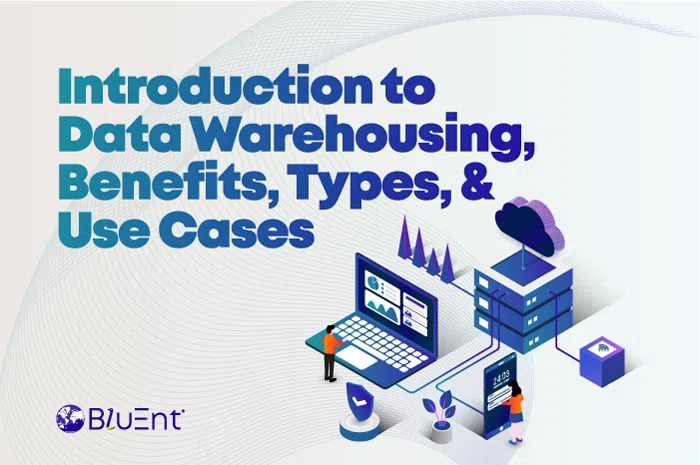
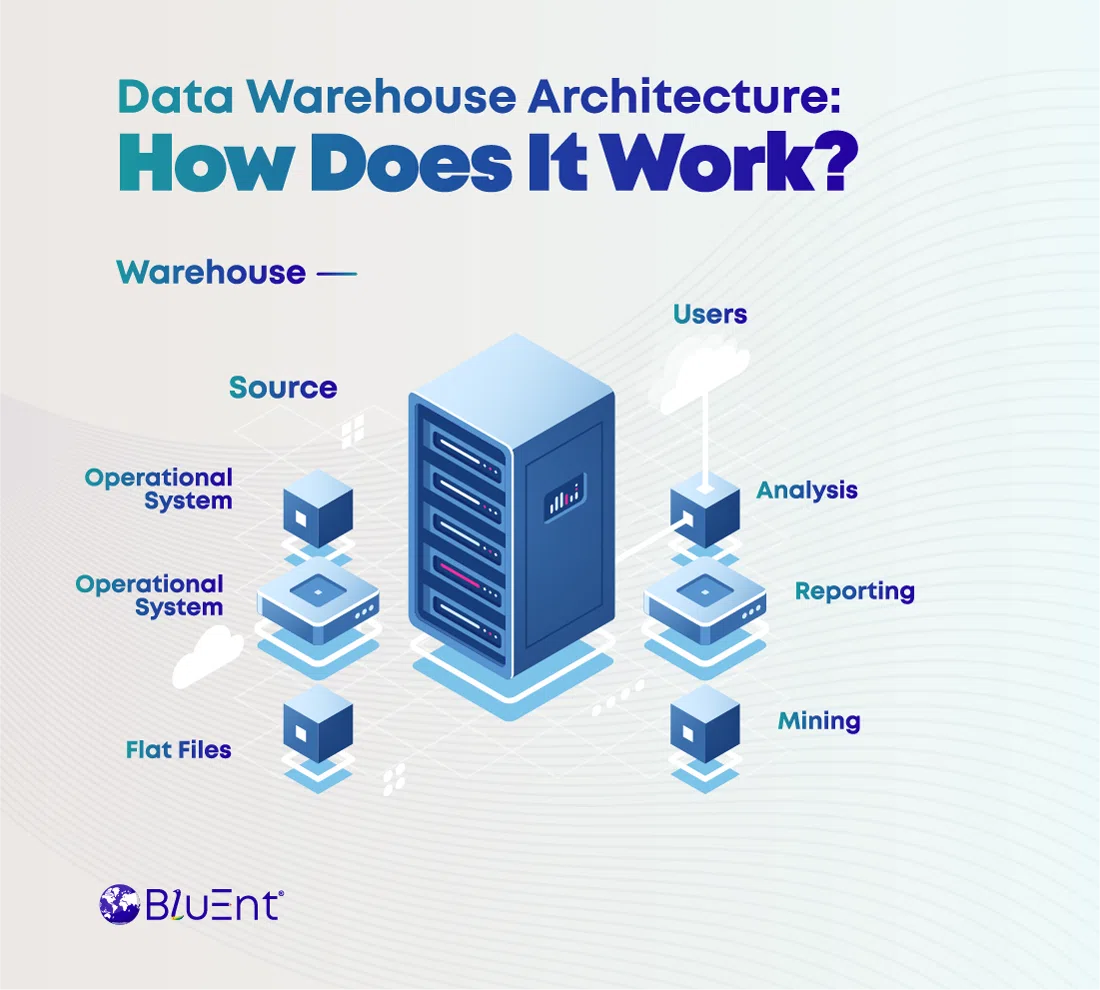
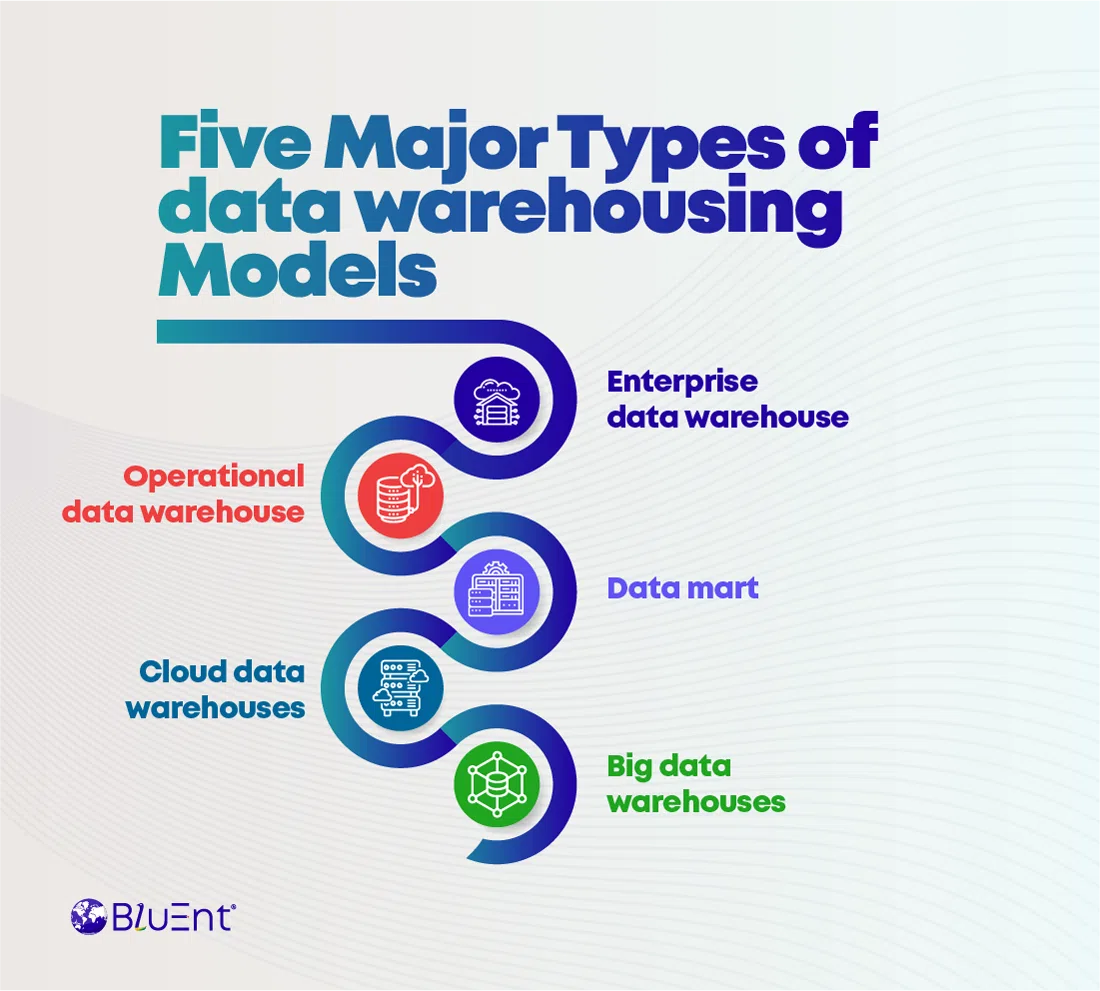
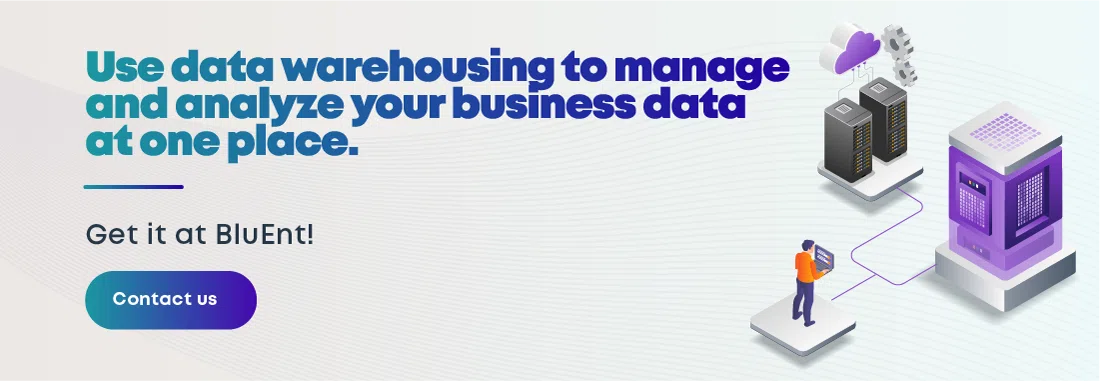
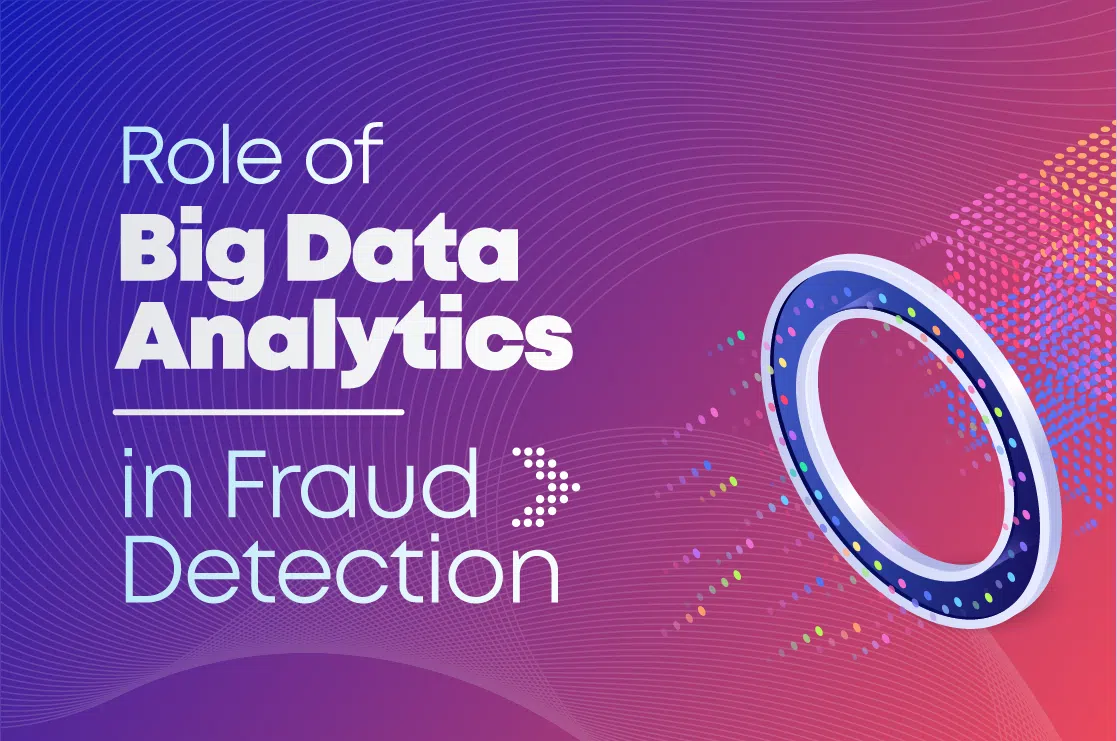 Fraud Data Analytics: How to Detect and Prevent Fraud Using Data
Fraud Data Analytics: How to Detect and Prevent Fraud Using Data  Decoding the Power of Financial Data Analytics for Business Success
Decoding the Power of Financial Data Analytics for Business Success  How can Big Data in Manufacturing Boost Your Business Processes?
How can Big Data in Manufacturing Boost Your Business Processes? 